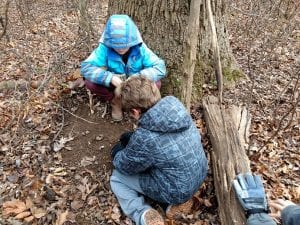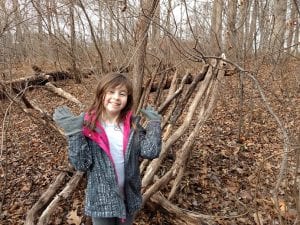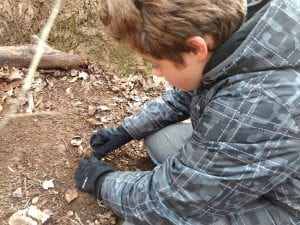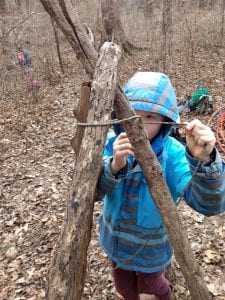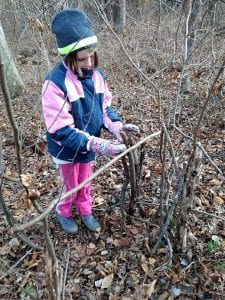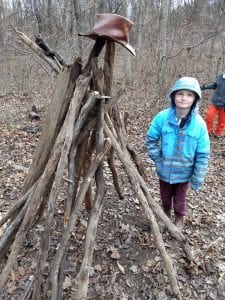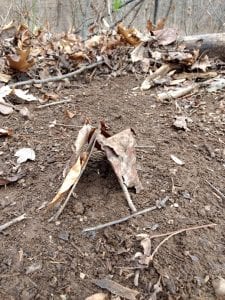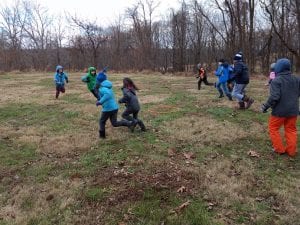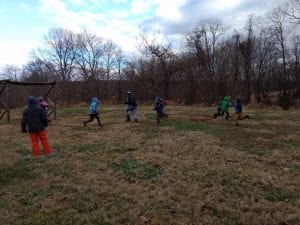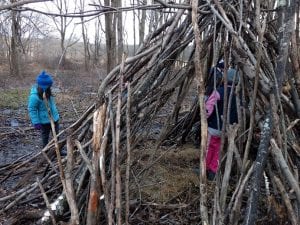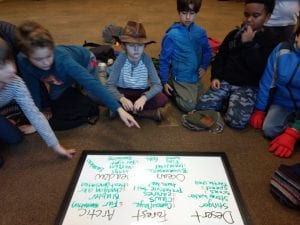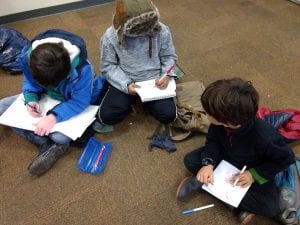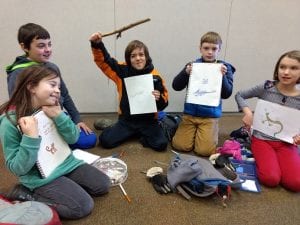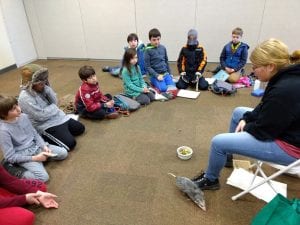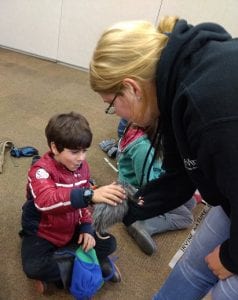12/4/2018
Today we worked on shelter building, an excellent skill to practice for fun and for survival situations. We started by reviewing some basic shelter types, including a debris hut, a lean-to and a wicki-up which is like a teepee but covered in debris. Another option for a shelter that we learned about was a bough bed, which is essentially a platform that brings your body up off the ground and is covered with tree boughs and leaves. These beds are good for keeping insects off, preventing you from getting cold from a cold ground and it helps keep you dry too. After reviewing these basic shelters we headed out onto the trail to a shelter building spot to practice.
We broke into smaller groups and built a variety of shelters. Some of us built mini models of a teepee shelter and others built a bigger version without the debris (which would make it a wicki-up). Some of us worked individually and build walls between small shrubs and used the natural crevasses of trees to construct a one person shelter. Another group started the workings of a lean-to. After taking down most of the shelters we headed to the gazebo and enjoyed snack and share, where we share anything excited since last class or something we’re looking forward too. With full bellies we ran down the meadow and toward Wedding Point where we played a game.
This spot is a great place to play games because its grass, its flat and its open. We set out cones for our boundaries , placed four hula hoops through the field of play and then set out colorful pipe cleaners at the far end of the field. The game we played is called Migration. How the game works is the kids start at one side of the field (the side without the pipe cleaners) and when we say go they have to run to the other side of the field to collect a food item which is represented by the pipe cleaner. On their “migration” across the field they may encounter predators (two kids that are taggers). If they get tagged they have to go back and start over. If they had a pipe cleaner in their hand they have to return that pipe cleaner and start over. The hula hoops represent safe zones that the kids can enter and “hide” from predators for 10 seconds. These safe zones can be places like wetlands, thickets in a field or a stand of trees birds can take refuge in. In this particular game we were kestrels migrating and trying to not be eaten by hungry peregrines. Once you collected two pipe cleaners (gone down the field twice) you have successfully migrated!
Once we were sufficiently tired we headed back to the Ed Hut to review our map of Irvine. We looked over the trails we have explored and thought about trails we hope to explore in the Spring. With the sun setting soon and the day winding down we spent some time working on a pre-existing shelter nearby. This shelter is essentially a very large tee-pee like shelter (a wicki-up without the debris) and can fit at least 4-5 kids comfortably inside. With all the rain we’ve had the ground around and underneath the shelter had become rather soggy. We laid down clumps of dried grass, worked on a stick bridge and fixed some of the sticks around the side that had fallen.
With cold hands we hiked back to Irvine to warm up and play a game called Battle of the Biomes. In this game the kids are separated into three groups. On a white board we think of different types of biomes (essentially ecosystems that are dictated by climate). Our biomes were a desert, forest, meadow, arctic, and ocean and under each one we listed out 5 adaptions animals would have in each one. For example, in the arctic some animals have blubber to keep warm and in the ocean some animals have bioluminescence to communicate. We then went round robin and selected adaptations that we liked in order to build our super animal. Each of us had about 30 minutes to either create our own animal based off the adaptations we chose and or work together with our group. Using dice we rolled to battle for who won each biome and the number of dice you got depending on how many adaptations you chose per biome. In the end we all really enjoyed playing the game and creating really interesting, unique creatures!



